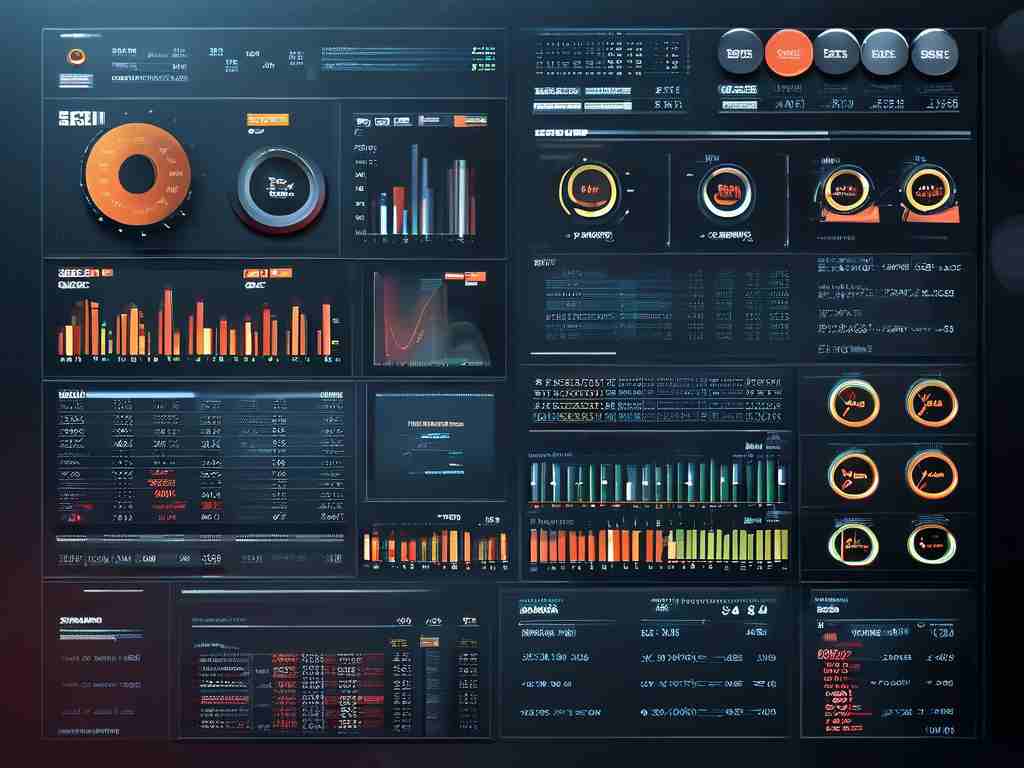In the evolving landscape of digital transformation, mastering core data analysis algorithms has become indispensable for extracting actionable insights. This article explores foundational techniques that power modern analytics workflows while highlighting practical applications across industries.

At the core of data exploration lies Linear Regression, a statistical workhorse for modeling relationships between variables. By fitting a straight line through scattered data points, analysts quantify correlations – like predicting housing prices based on square footage. Retailers frequently employ this method to forecast sales trends, adjusting inventory based on historical patterns and seasonal fluctuations.
For classification challenges, Decision Trees offer intuitive solutions through binary branching logic. These tree-structured models split datasets using feature thresholds, making them valuable in credit scoring systems. Financial institutions leverage this algorithm to assess loan eligibility by evaluating income levels, employment history, and debt ratios through sequential yes/no decision nodes.
Clustering problems find their answer in K-Means, an unsupervised learning technique that groups similar data points. Marketing teams use this to segment customers based on purchasing behavior, enabling targeted campaign strategies. A notable case involves e-commerce platforms analyzing user clickstream data to identify high-value customer clusters for personalized recommendations.
When handling complex patterns, Random Forests outperform individual decision trees through ensemble learning. By aggregating predictions from multiple trees, this algorithm reduces overfitting risks. Healthcare researchers apply random forests to analyze patient data, improving disease prediction accuracy by cross-referencing symptoms, lab results, and genetic markers.
Dimensionality reduction becomes manageable with Principal Component Analysis (PCA). This technique condenses high-dimensional data into interpretable components, crucial for image processing tasks. Automotive engineers use PCA to simplify sensor data from autonomous vehicles, isolating critical variables for collision avoidance systems.
Time series forecasting relies heavily on ARIMA (Autoregressive Integrated Moving Average) models. Energy companies implement ARIMA to predict electricity demand, incorporating seasonal variations and historical consumption patterns to optimize grid management.
In natural language processing, Naive Bayes classifiers excel at text categorization. Media organizations automate news article tagging using this probabilistic model, analyzing word frequency to classify content into politics, technology, or sports categories with remarkable speed.
Recent advancements in Neural Networks have revolutionized pattern recognition. Deep learning architectures enable facial recognition systems by processing pixel data through multiple hidden layers. Security systems now authenticate users by mapping facial features to mathematical embeddings with sub-millimeter precision.
While algorithms form the backbone of data analysis, successful implementation requires careful consideration of business context. A/B testing frameworks often combine multiple algorithms to optimize digital marketing ROI. For instance, e-commerce platforms might blend clustering and regression models to personalize pricing strategies based on user segments.
Ethical implementation remains paramount. Biased training data can skew algorithmic outputs, as seen in some recruitment tools that inadvertently favored specific demographics. Responsible data scientists rigorously audit models for fairness, employing techniques like adversarial debiasing during development phases.
The future points toward automated machine learning (AutoML) platforms that streamline algorithm selection. These tools evaluate dataset characteristics to recommend optimal techniques, democratizing advanced analytics for non-specialists. However, human expertise remains vital for interpreting results and aligning insights with organizational objectives.
Real-world success stories abound. A logistics company reduced fuel costs by 18% through regression analysis of delivery routes. A healthcare provider improved patient readmission predictions by 40% using gradient-boosted trees. These examples underscore the transformative potential when properly implemented.
As data volumes grow exponentially, proficiency in these algorithms becomes crucial across domains. From optimizing supply chains to personalizing education pathways, these mathematical frameworks translate raw data into strategic assets. The next frontier lies in developing hybrid models that combine statistical rigor with domain-specific knowledge, pushing the boundaries of what's possible in data-driven decision-making.









